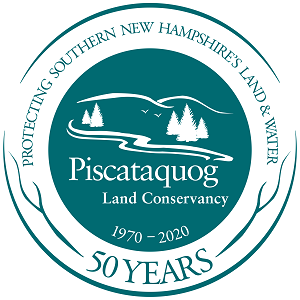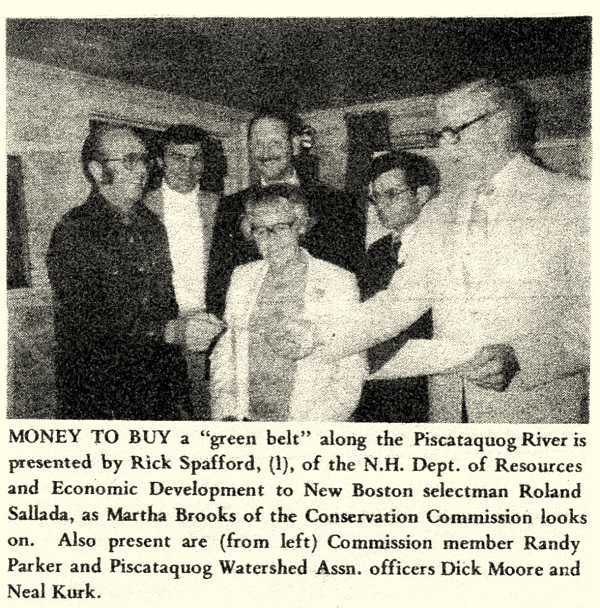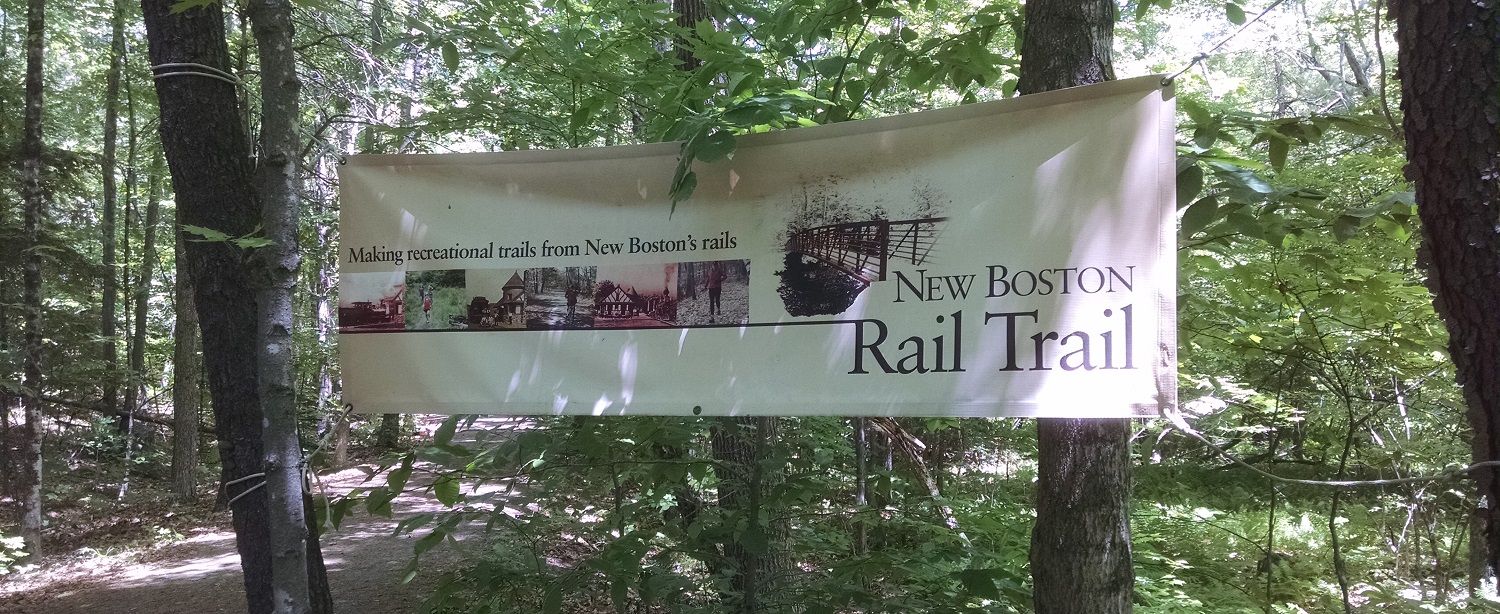
On May 11, 1970 the Piscataquog Watershed Association (which later became PLC) came into legal existence by filing its articles of agreement with the NH Secretary of State’s office in Concord. Many long-time members still remember when the organization was known as the PWA., but not all remember how the organization got started back in 1970, when a dedicated group of people came together to protect a ribbon of land that we know today as the New Boston Rail Trail. Here’s the story…

In the early 1960’s, the small town of New Boston, New Hampshire was just starting to emerge from a 30-year period of declining population. Quite a few of the houses in town were vacant. All the approximately 900 residents of New Boston knew each other, and many were related to each other over several generations. But as the 1960s progressed, and the construction of interstate highways linked southern New Hampshire to the greater Boston area, a trickle of new residents became a flood. By the end of the decade, the population of New Boston had grown by 50% in just ten years.
While all the newcomers helped revitalize New Boston and many other towns in our area, they also woke people up to the fact that the rural landscape that we -- natives and newcomers alike -- loved could no longer be taken for granted. Across the state, an awareness of the need to preserve and protect natural features and open space for future generations was gathering support in many rural New Hampshire towns.
New Boston was no exception, forming its first Conservation Committee, later the Conservation Commission, in April 1969. Members included Randy Parker and Carolyn Todd. In early 1970, Diana Sterling of the Goffstown Conservation Commission informed the New Boston Conservation Commission (NBCC) that the old railroad right-of-way and land along the Piscataquog River owned by the Boston and Maine Railroad was going up for sale. Having recognized the value of this 6-1/2 mile strip as a conservation asset, the New Boston Conservation Commission immediately began to plan how to acquire the property for the town.
Once the news broke that the old rail bed was going to be sold off, it soon became apparent that the Town would not be able to move quickly enough to buy the land. In February 1970 the NBCC sent out a letter to interested persons in New Boston and surrounding towns proposing the formation of an independent nonprofit conservation organization. The association would hold lands and conservation easements in the watershed of the Piscataquog River, including all or parts of the towns of Bedford, Deering, Dunbarton, Francestown, Goffstown, Greenfield, Henniker, Lyndeborough, Manchester, Mont Vernon, New Boston and Weare.
Interest in such a conservation organization was high, and three months later, on May 8, 1970, formal Articles of Agreement creating the Piscataquog Watershed Association (PWA) were filed with the New Boston Town Clerk. The articles were filed with the State of New Hampshire three days later on May 11th. A young attorney from Weare named David Souter helped with the articles and with getting PWA its tax-exempt status from the Internal Revenue Service.
With PWA up and running, Randy Parker and Bob Todd were appointed to conduct negotiations with E.J. Marrs of the Boston and Maine Railroad. Over the course of the next five years both parties faced a number of challenges. For one, the railroad land had already been broken up into parcels, and some sections had already been sold to the New Boston 4H, the Playground Association, and the owner of Gregg Mill Farm. During negotiations the B&M went through two bankruptcies. A gravel company wanted to reactivate the Parker Station end of the line to haul gravel for use on Logan Airport expansion. NH State Route 114 was constructed across the eastern end of the New Boston spur line.
Meanwhile, the PWA enthusiastically carried on fundraising activities for the land purchase. For years, the Canoe Section of the Appalachian Mountain Club had used the river in New Boston for a canoe instruction weekend, which included a spaghetti supper provided by New Boston Ladies Club and sleeping-bag space in the Town Hall. The PWA took over this activity and incorporated it with their early annual meetings. Direct mailings and personal solicitations brought in significant funds that were augmented by other fund-raising activities. Iron spikes were retrieved from the railroad bed and sold for $25. Other donors were given certificates showing they had contributed to 10-foot lengths of abandoned rail bed. There were bake sales, ham and bean suppers, income from the concession stand at the 4-H Fairgrounds, square dances, and a very successful Winter Sports Raffle.
The purchase of the four B&M right-of-way parcels (total 3.4 miles of trail, 68 acres) by the PWA for $14,625 was finalized in 1976. In 1979, the Town of New Boston received a Federal Land and Water Conservation Fund grant that enabled the Conservation Commission to acquire the railroad parcels from the PWA. The grant stipulated that the property “cannot be converted to other than public outdoor recreation use without the written approval of the Secretary of the US Department of the Interior.” The PWA deeded the property to the New Boston Conservation Commission on May 19, 1979, thereby completing the PWA’s first conservation project, the value of which is now priceless.
The scenic railroad right-or-way attracted walkers and bicyclists as soon as the railroad track was torn up and has increased in popularity over the decades. A major refurbishment by the Conservation Commission was finished in 2015, and the path was officially named the New Boston Rail Trail. The PWA, later renamed the Piscataquog Land Conservancy, moved on to other projects, and 50 years later is still going strong!
This story was adapted from a longer article written by Gail Parker, which originally appeared in the summer 2016 edition of the PLC newsletter. Gail and her husband Randy live in New Boston and were founding members of the Piscataquog Watershed Association (later PLC).
(Photo above: Newspaper clipping courtesy of Randy Parker)
